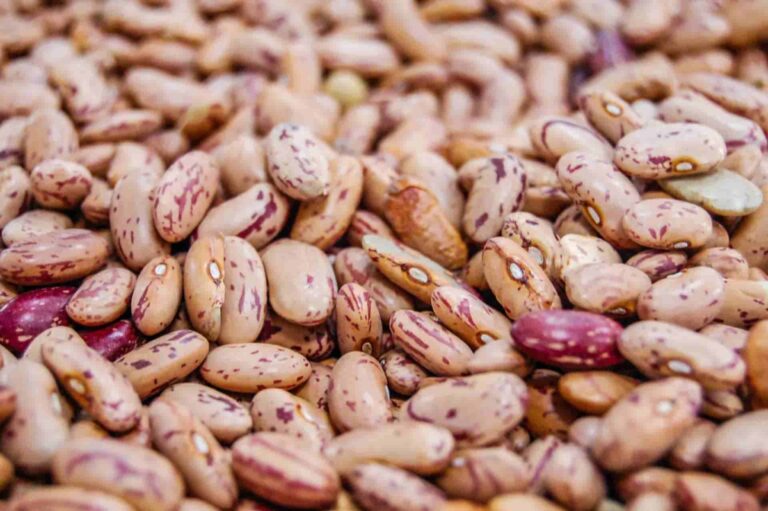Feta cheese 101 – expert insights just for you
Did you know that feta cheese is the most well-known kind of white brined cheese in the whole world?
- Feta may be served as a table cheese, added to salads like the Greek salad, or baked into pastries like the spinach pie and cheese pie that are traditional Greek meals. It is often served with olive oil or olives, and flavorful herbs like oregano are commonly sprinkled on top before serving. It may also be prepared in a variety of cooked forms, such as in the form of a sandwich, an omelette, or as a salty substitute for other types of cheese in a number of different cuisines.
- The term “feta” originates from the Italian word “fetta,” which means “slice.” The word “slice” derives from the Latin word “offa,” which means “a morsel” or “piece.” It is likely a reference to the process of slicing cheese in order to arrange the slices into barrels. The phrase first appeared in the Greek language in the 17th century, but it did not gain popular use until the 19th century.
- Within the European Union, the consumption of feta has been regulated as a product with a protected indication of origin from the year 2002. Only cheeses that are produced in a manner that is considered to be traditional in certain regions of Greece, and that are made from sheep’s milk, or from a mixture of sheep’s milk and up to 30% goat’s milk from the same region, are permitted to be referred to as feta, in accordance with the relevant EU legislation.
- Similar white brined cheeses often referred to as “white cheese” in various languages are traditionally produced in the Eastern Mediterranean and around the Black Sea, as well as more recently in other regions. These cheeses are frequently made in whole or in part from cow’s milk, and they are sometimes also referred to as feta.

Feta cheese nutrition values and health benefits
- Calcium and vitamin B12 are both beneficial to bone health and offer natural sources of energy. Feta cheese has a high concentration of each of these nutrients. Along with vitamin B6, phosphorus, copper, zinc, manganese, and selenium, feta cheese also contains selenium. In addition, it has just a moderate quantity of the minerals iron, magnesium, potassium, and vitamin A.
- Because dairy products such as feta have a relatively low iron level, research is now being conducted to discover whether or not adding more iron to feta cheese might confer any additional health advantages. Additionally, feta cheese has a high salt content, of which the majority of individuals currently consume more than their recommended daily allowance.
- The calcium content of feta is higher than that of many other types of cheese. Getting enough calcium in your diet is important for maintaining strong teeth and bones. Phosphorus is present in large amounts as well. There is a correlation between getting enough calcium and phosphorus in one’s diet and having better bone density, which may help avoid osteoporosis.
- The fat-soluble vitamins D, A, K, and E cannot be transported through the body or absorbed by the body without the presence of dietary fat. Dietary fat may be found in feta cheese. If your diet is lacking in fat, you might be at risk for a deficit in a fat-soluble vitamin like vitamin D if you do not get enough of it in your diet.
- Probiotics may be found in naturally fermented foods such as feta cheese. These particular types of beneficial bacteria contribute to the maintenance of a healthy digestive tract and help the immune system do its job. Both irritable bowel syndrome and inflammatory bowel disease are characterised by a variety of digestive issues, including diarrhoea and constipation. Probiotics are now the subject of research to see whether or not they may alleviate these symptoms.
- Cheese is not often one of the first foods that springs to mind when discussing alternative weight control strategies. However, the majority of cheeses, including feta cheese, are great sources of calcium, which has been found to assist in the maintenance of a healthy body weight and may even aid in weight loss. In point of fact, studies on calcium consumption have revealed that consuming a diet high in calcium is often connected with reduced body fat.
- For people who are lactose intolerant or allergic to milk, feta cheese is not a good choice. Milk allergies are among the most frequent forms of food allergies, affecting both adults and children to a significant degree. It is interesting to note that individuals who are sensitive to cow’s milk may also be allergic to the milk of other animals, such as sheep and goats.
- It has been established that consuming an excessive amount of sodium in one’s diet can contribute to high blood pressure, which is in turn linked to chronic conditions such as kidney disease, stroke, and heart disease.
- Cheeses like feta that have not been pasteurised but are still soft can potentially harbour the bacterium Listeria monocytogenes, which can give adults symptoms similar to a mild case of the flu. However, since the bacteria has the potential to cause significant damage to unborn children, it is strongly recommended that pregnant women avoid consuming unpasteurized cheeses.
- Tyramine is a naturally occurring chemical that may be found in foods that have been aged or fermented, and feta cheese is no exception. People who use monoamine oxidase inhibitor medications are more likely to have blood pressure increases, heart palpitations, and severe headaches when tyramine is present in their bodies. For instance, those that are recommended for patients with Parkinson’s disease or depression.
100g of feta cheese have 264 calories (1106kj), 14g protein, 21g fat, and 4g carbs, including 0g fibre.

How to store feta cheese and how to buy them
- If you want greater amounts of feta, you need go elsewhere since the majority of chain stores offer it in tiny packets. One alternative is to search for Greek goods in Middle Eastern and Greek marketplaces, while another is to look for Greek goods in internet stores.
- Feta is often offered as blocks that have been preserved in brine and are then packaged for sale (heavily salted water). It is possible to preserve it for a very long period by placing it in the refrigerator and covering it with brine. If you find that you need more brine as you use it, just add some more. To prepare a brine, combine one pound of kosher salt and one gallon of water in a large mixing bowl. It is possible that the salt may not entirely dissolve, but this is OK.
- The barrel-aged feta that is sold directly from the barrel may be stored in paper by first being wrapped in a lightweight paper and then being placed in a plastic bag with a zip-top closure. Keep the feta in the paper, even when the paper becomes wet from the moisture of the cheese, and store both items in a plastic bag or wrap them in plastic.
- The process of storing feta in olive oil is often referred to as “marinated feta,” and, depending on how you want to use the cheese, this might be the answer for at least some of your feta. Put pieces of feta in glass jars so that they are about half an inch from the top and cover them with olive oil to the very top. Put a secure seal on it, then put it away. Do not refrigerate.
- You can freeze feta, although doing so may cause the texture to shift significantly. Instead of cutting the feta into slices once it has been defrosted, crumble it and use it on salads or in prepared meals. Before freezing, ensure that the food is well-wrapped in airtight plastic wrapping. Put it in the refrigerator to defrost without taking it out of the packaging. Once the food has been defrosted, refrigerate it in brine or olive oil if it is not going to be consumed right away.
- If you find that Greek feta is too salty for your taste, take the portion of the cheese that you want to use and soak it for one hour in a combination that is half water and half fresh milk. Take the water and milk combination out, let it dry, and then throw it away.
- The shelf life of unopened blocks of feta cheese typically ranges between between two and three months, depending on the specific variation. The fact that the cheese is stored in a saline solution, which performs an outstanding job of preserving it, means that the feta should easily keep for two weeks up to a month beyond the expiration date that is printed on the label.
- On the other side, we have crumbled feta that is not packaged in brine; this kind does not maintain its quality for as long. In spite of this, you may anticipate that it will continue to be edible for about a week beyond the date that is printed on the label.
- Let us begin with what excellent feta ought to look like and how it ought to feel. In general, the flavour of this cheese may be described as being fairly salty and tangy at the same time. And the consistency is silky and creamy, making it simple to cut into cubes or slices. Now, let us talk about how to identify feta that has gone bad.
- To begin, anything that seems to have mould or any black specks on the surface should be discarded.
- Examine the colour of the cheese as well as its consistency if it is bathed in brine. Throw away the cheese if it has become darker and is slimy as a result. The same thing should be done if it has begun to smell like sour cream.
- If, up to this point, everything appears to be in perfect order, the next thing you should verify is the texture of the cheese. If it falls apart when you pick any of it up, it has likely passed its prime and you should get rid of it as soon as possible.

Cooking techniques, secrets, and tips from the kitchen
- This dish will appear familiar to anybody who has had the Greek specialty spanakopita (phyllo dough triangles packed with spinach, feta, and dill). This pie is a fancier and healthier alternative to traditional hand pies, including less dough and more greens in each serving. Onions, garlic, spinach, chard, and dill are sautéed in olive oil before being layered in a phyllo shell and baked for about an hour. You may eat it hot or cold, as a main course or a side dish, and in either case it will be delicious.
- Vegetables, herbs, and cheeses have all been preserved in oil for a long time because of its exceptional preservation properties, particularly in the Mediterranean, where olive oil is abundant and inexpensive. Basically, all you have to do is pile feta, garlic, sun-dried tomatoes, and herbs in a tiny pint jar, fill it to the brim with olive oil, and let it rest for 10 days. Preserving food in oil, particularly herbs and garlic, allows for later use of the oil, which has taken on the flavour of the preserved food.
- Baked chicken packed with feta and covered in tomato sauce is a tasty alternative to the usual chicken meal. Plus, this chicken tastes great both hot and cold, so it is perfect for your next dinner party’s bring-and-share appetiser. Stuffed with a herb-feta mixture, boneless chicken breasts are baked in a tomato sauce with a topping of feta and Parmesan. After the dish has been assembled, it is cooked till bubbling and golden brown. Excellent when poured over spaghetti and accompanied with a side salad.
- To make a nutritious salad, mix together some barley, roasted beetroot, walnuts, feta, and cilantro, and then toss with a vinaigrette made from maple syrup and apple cider. Despite its limited use, barley is a tasty and adaptable grain. For more than 10,000 years, humans have farmed barley for food. Pearled barley, in which the outer bran layer has been removed, is the most prevalent kind of barley.
- Pan-grilled flatbreads taste great on their own, but they really shine when packed with savoury ingredients like garlic, onions, sweet raisins, or a hard cheese like feta. They are well with soups and curries. I have had these for breakfast with a fried egg on top and as a snack dunked in baba ghanoush. are surprisingly simple to whip up. Mix together yeast, salt, bread flour, whole wheat flour, full-fat yoghurt, and olive oil. Make pancakes from the dough when it has risen, then fry them in a pan.
- Though it can be prepared in less than 30 minutes, this lovely Mediterranean-inspired pasta meal is bursting with flavour. This recipe features some of Greece’s most well-known exports, such as the tangy feta cheese, briny olives, aromatic herbs, and sweet, juicy tomatoes. Tomatoes and garlic are baked for only a few minutes to bring out their juices and flavours while keeping their freshness. This unique spin on classic spaghetti marinara is sure to please everyone in the household.
- A hearty salad of bitter greens is the perfect antidote to the rich, heavy dishes that tend to overwhelm our taste buds in the dead of winter. Radicchio and other bitter greens help tone the liver and blood by stimulating the digestive tract. The leaves closest to the plant’s core are less bitter than their more distant counterparts. The sharp radicchio is mellowed by the addition of feta, chickpeas, and an egg yolk dressing, while the sweet and spicy roasted pumpkin rounds out the dish.

History of feta cheese from the beginning until today
- Polyphemus used the skins of animals to transport the milk that he gathered from his sheep until one day he found that the milk had become curdled and had taken on a solid appearance. The cheese that Polyphemus made is often regarded as the progenitor of today’s feta kind.
- The ancient Greeks created a sort of feta from sheep’s milk during the Archaic period using the same basic process of preservation in brine. However, they referred to the product that resulted from the coagulation of milk as simply “cheese.”
- The cheese known today as feta was first documented in the Byzantine Empire, when it was given the name prosphatos and was thought to have originated in Crete. An Italian traveller who went to Heraklion in Crete in 1494 provides a detailed description of the preservation of feta in brine.
- The term “feta” was first used by Greeks in the 17th century, and it most likely refers to the practise of slicing up cheese so that it could be placed into barrels or to the method of cutting the cheese in thin slices so that it could be served on a plate. However, the term “feta” itself did not become common usage until the 19th century.
- According to law passed in 1926, feta has been acknowledged as an authentic Greek product ever since that year. In spite of the fact that its existence is intricately intertwined with Greek history and the traditional way of life in Greece, feta has always been an essential component of the Greek diet.
- In modern times, feta has become the most popular cheese in Greece, and it is also one of the Greek goods that is exported the most. The European Commission has designated feta as a product that has a “Protected Designation of Origin,” or P.D.O. for short.







